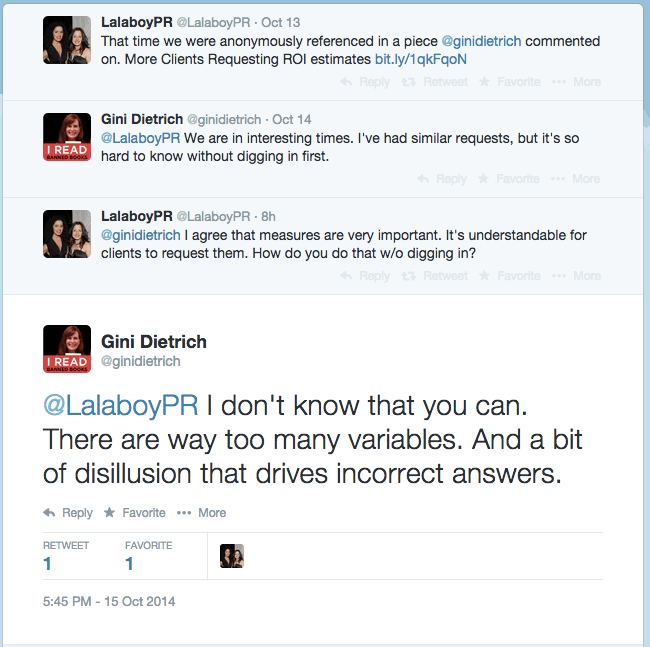A couple of years ago, I received a new business phone call two weeks before Christmas.
The prospect was a very frazzled, very stressed business owner who achieved his dream and got his product in some of the big box retailers, including Target and Walmart.
A dream come true, right?
The problem was he needed to sell out of the product in those stores by Christmas or they wouldn’t be restocking him.
A very real, and very stressful, situation.
But it was two weeks before Christmas and he thought media relations would be his magic bullet.
In his mind, he could hire us, we could call our friends at the major publications, and voila! He would sell out by Christmas.
Of course, he didn’t have anything newsworthy and his product was fun, but a “me too” gift. His competitors were outspending him and were much more creative. Things we could have worked with, given six months or a year.
But two weeks?
I was kind of a smart butt and told him the only way he’d get in the New York Times before Christmas was if he shot someone…and preferably someone in the White House.
Let’s just say he said some unkind things and hung up on me. I also could have been a little more sympathetic.
Time-Specific ROI Estimates
I was reminded of this story when I read, “More Clients Asking for Time-Specific ROI Estimates” on PRNewser.
Apparently they belong to a PR/marketing group on Facebook and saw an update written by a prospective client who is looking for help in justifying the cost of hiring a PR firm.
They said:
We would like to add some goals and targets against which we can measure. These could be number of placements, traffic from placements, tweets and retweets, etc. Could you outline some reasonable metrics for a 3-month engagement?
Allow me to dissect this question.
- Goals and targets to measure against is a perfectly reasonable request, but what is it you’re trying to achieve? The answer should be increased brand awareness, increased interest, and increased sales (or higher margins or a shortened sales cycle).
- Number of placements, traffic from placements, tweets and retweets are the wrong metrics. These are vanity metrics. Yes, you should have traffic from your media relations efforts, but traffic alone does not a happy client make.
- Three months?! That’s barely enough time to get going. Every, single publication, blog, and media outlet in the world has lead times. Even this little blog has a good month…and that’s for the information and companies we’ve already vetted. If you’re new to us, it could be two months or longer. Now multiply that for larger organizations. Trade publications typically have three to six month lead times. Consumer publications have six month lead times. Three months is not long enough to accomplish anything.
Rather, this is what you should consider for the ROI of PR: Months one through six are all about building awareness. Months seven through 12 are to drive interest. After the first year, if everything goes according to plan and there aren’t any surprises, you can start driving revenue from a PESO communications model.
Then you can build your goals and targets against which you can measure.
How to Figure the ROI of PR
It’s unfortunate that this is not a unique request. It actually is a very common perception about the PR industry: You get me lots of stories and my phone will ring off the hook.
That’s just not the case…and we’re terrible about setting expectations (as an industry).
As it turns out, LalaboyPR, an agency run by sisters out of Puerto Rico and New York City, was anonymously referenced in the PRNewser piece and they tweeted me.
When you are a prospect looking to hire a PR firm (or a PR firm working with a prospect), really think about what it is you want to achieve before you figure out what the ROI of PR is.
Media impressions and number of placements and Facebook likes and YouTube views and newsletter subscribers and website visitors are not the correct metrics.
If you do not have a system in place to track what happens when you increase all of those numbers, and whether the efforts that result in those things are driving qualified leads and new customers, you aren’t ready for primetime.
The way to handle the new business process is, instead, to ask for case studies and references for like businesses where the PR firm has done what you need them to do, in terms of business goals.
- Ask what their average ROI of PR was for the past 12 months with current clients.
- Ask how they integrate all four media types.
- Ask which clients—current and past—you can talk to where the results have been similar.
Then let them do their thing.
- They’ll have to dig into your analytics.
- They’ll need to see a business plan.
- They’ll have to fully understand the sales process.
- They’ll need to know what’s coming and where your organization with be in a year, three years, and 10 years.
- They’ll need to see what’s working and what’s not working.
- They’ll need to figure out where your internal team is weak.
Then, and only then, can they develop a strategy and give you the goals and targets against which you can measure.
I’m really jealous of the super talented people at Ink Factory so I thought I’d try my hand at drawing my own image for this. What do you think? I probably shouldn’t quit my day job.

